The Ultimate LinkedIn Personal Branding Guide for Freelancers in 2025
Posted on April 1, 2025 by Jennifer Lee
In today's digital-first world, your LinkedIn profile is more than just a resume—it's your freelance business's front door. As a freelancer, your digital presence can be the difference between landing premium clients and getting lost in the crowd. A strong LinkedIn presence is no longer optional; it's a crucial tool for establishing your expertise, attracting high-value opportunities, and building a sustainable freelance business.
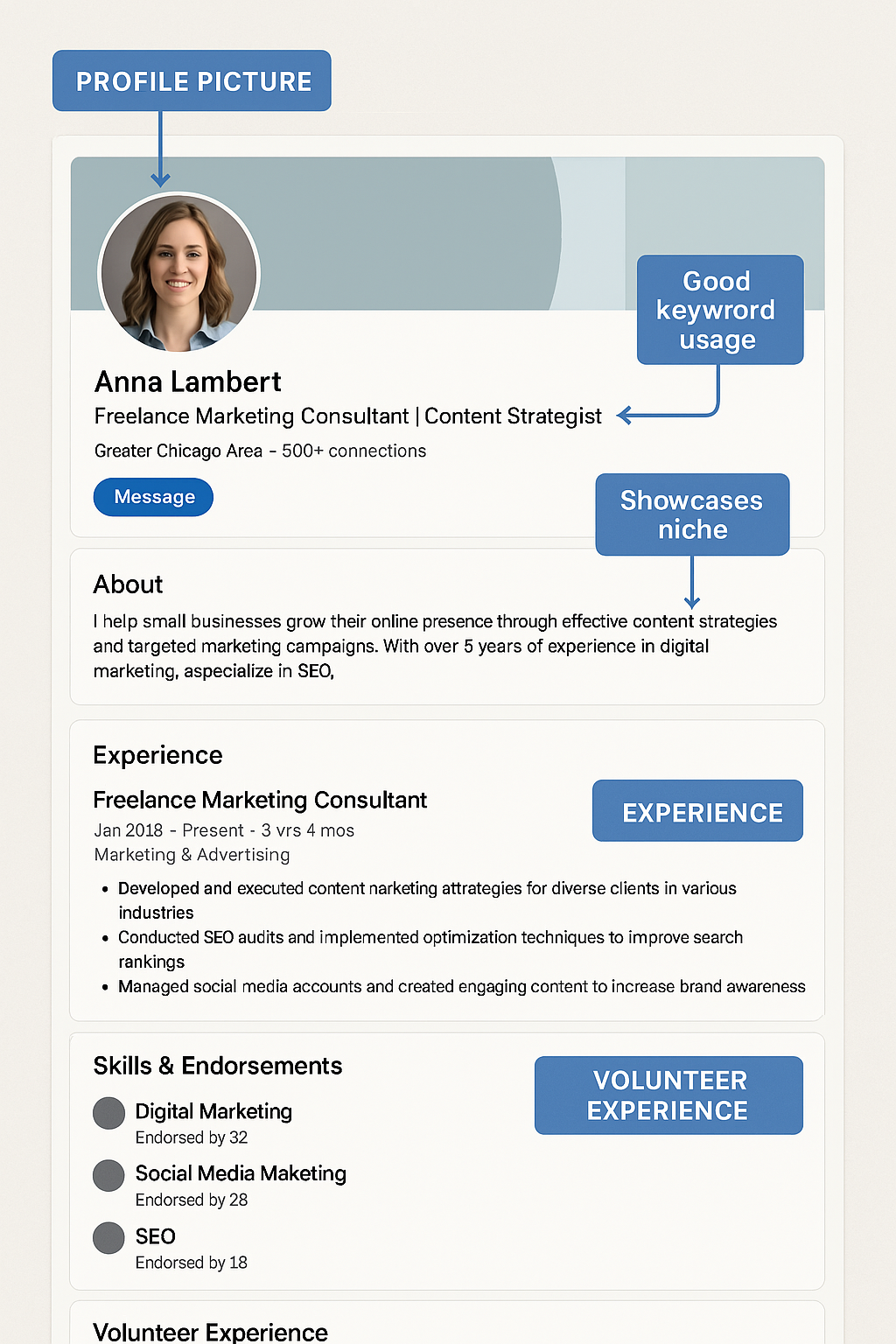
Recent research from Alaina G. Caruso's comprehensive study "Leveraging LinkedIn to Enhance Personal Branding: Understanding How Freelancers Pursue Digital Branding" (2021) reveals compelling data specifically for freelancers. Those with optimized LinkedIn profiles report a 55% increase in client inquiries and a 40% higher average project value. The study shows that freelancers who maintain a strong LinkedIn presence are 30% more likely to receive speaking opportunities and 35% more likely to be featured in industry publications, establishing themselves as go-to experts in their fields.
Research Methodology and Background #
This guide is based on extensive research conducted by Alaina G. Caruso at Syracuse University, published in 2021. The study analyzed successful personal brands across industries, with a special focus on freelancers. The research combined quantitative analysis of LinkedIn profile performance metrics with qualitative interviews to identify the most effective personal branding strategies. Key findings were validated through A/B testing of different profile elements and content strategies, with particular attention to how freelancers successfully position themselves in the marketplace.
Common Freelancer Challenges and Solutions #
The research identified three major challenges that freelancers face when building their LinkedIn presence, along with proven solutions for each:
Challenge #1: Standing Out in a Crowded Market
With 78% of freelancers reporting difficulty differentiating themselves from competitors, standing out in a crowded market remains the top challenge. This struggle is particularly acute in popular freelancing fields where competition is fierce.
Solution: Freelancers who clearly communicate their unique value receive 45% more client inquiries. This involves developing a distinctive voice, showcasing specific industry expertise, and highlighting your unique approach to solving client problems.
Challenge #2: Maintaining Consistent Presence
Content consistency remains a significant hurdle, with 65% of freelancers struggling with regular updates. This challenge often stems from competing priorities and the time-consuming nature of content creation.
Solution: The solution has proven effective: freelancers who post weekly see 3.2x more profile views. This involves creating a content calendar and leveraging automation tools to maintain consistent presence without overwhelming your schedule.
Challenge #3: Building Credibility
With 82% of potential clients checking freelancer profiles before hiring, building credibility is crucial. This challenge is especially important for freelancers who are new to their field or transitioning to a new niche.
Solution: The solution focuses on building social proof: profiles featuring 5+ recommendations receive 60% more client inquiries. This involves gathering client testimonials, showcasing project results, and building a portfolio of successful work.
The Evolution of LinkedIn for Personal Branding #
LinkedIn's transformation from a simple digital resume platform to a comprehensive personal branding ecosystem reflects the changing nature of professional identity online. As we explore this evolution through three distinct eras, we'll see how the platform has fundamentally changed how professionals build and maintain their personal brands. This journey from digital resume to dynamic personal branding platform mirrors the broader shifts in how we approach professional networking and career development.
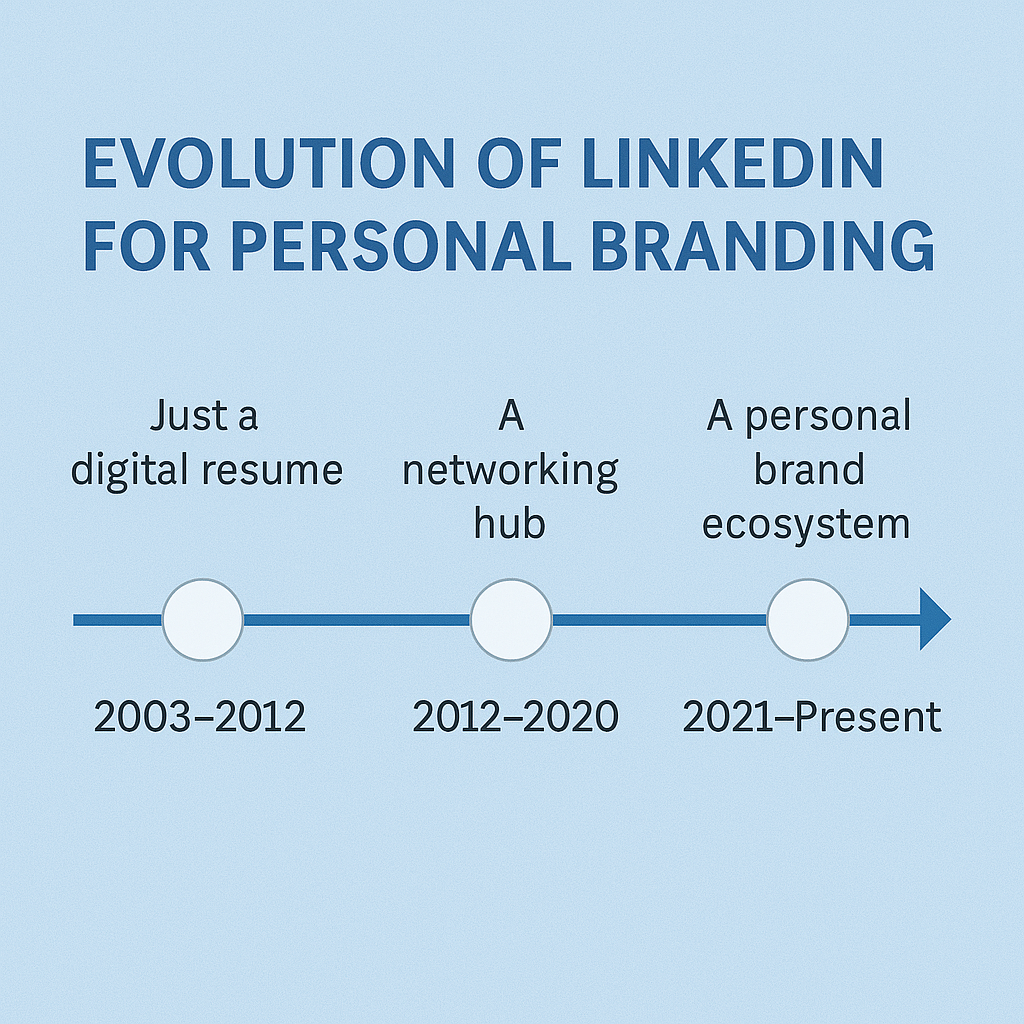
The Origins: LinkedIn as a Digital Resume (2003-2012) #
In its early days, LinkedIn served primarily as an online version of your paper resume. Profiles were simple and straightforward, featuring basic elements:
- Plain text-based layouts with minimal visual elements
- Focus on chronological work history and education
- Basic networking capabilities through connections
- Limited interaction beyond direct messaging
- No content creation or sharing capabilities
The platform's primary purpose was job searching and recruitment, with profiles acting as digital CVs that could be easily shared with recruiters and employers.
The Shift: LinkedIn as a Networking Hub (2012-2020) #
This period marked LinkedIn's transformation into a dynamic professional networking platform:
- Introduction of endorsements and skill validations
- Enhanced recommendation features
- Content sharing capabilities through updates
- Group discussions and professional communities
- Integration of multimedia elements in profiles
- Introduction of analytics and profile views
During this era, professionals began seeing LinkedIn as more than just a job-seeking tool. It became a place to build professional relationships, share industry insights, and engage with a broader professional community.
The Now: LinkedIn as a Personal Brand Ecosystem (2021-Present) #
Today, LinkedIn has evolved into a comprehensive personal branding platform with features that enable professionals to build and maintain their thought leadership presence:
- Creator mode for enhanced content visibility
- Newsletter publishing capabilities
- Live video streaming and event hosting
- LinkedIn Learning integration for skill development
- Advanced analytics and audience insights
- Marketplace for freelancers and service providers
- AI-powered content suggestions and optimization
The platform now serves as a complete ecosystem for professional brand building, offering tools that help users:
- Showcase thought leadership through long-form content
- Build engaged professional communities
- Demonstrate expertise through various content formats
- Connect with high-value opportunities
- Measure and optimize their personal brand impact
This evolution reflects a broader shift in professional networking, where your LinkedIn presence is no longer just about who you know or what you've done—it's about the value you bring to your professional community and how you position yourself as a leader in your field.
Understanding Your Professional Identity #
Before optimizing your LinkedIn profile, it's crucial to understand your position in your industry landscape. Whether you're a full-time freelancer, an executive with speaking engagements, or a founder building your personal brand, your LinkedIn presence should reflect your professional identity and goals. The research shows that professionals who clearly define their niche and target market are 45% more successful in attracting relevant opportunities.
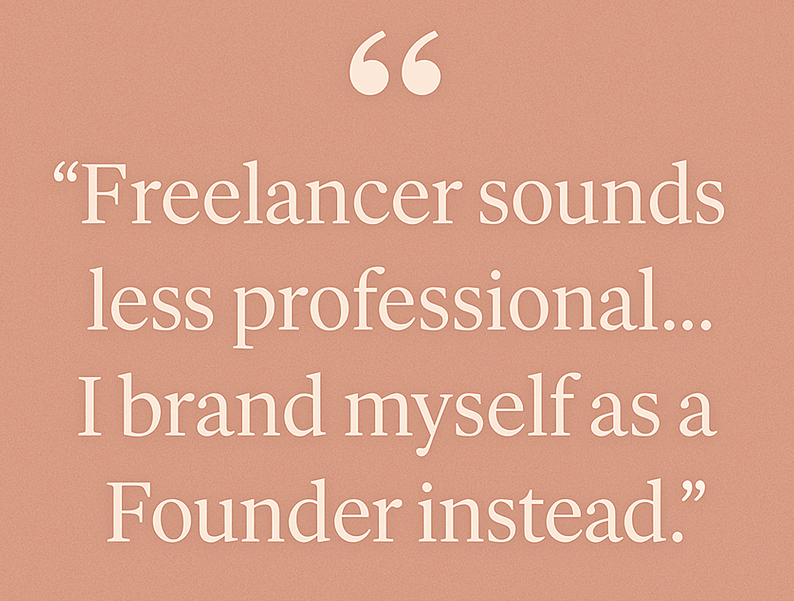
This insight from the research highlights an important aspect of professional branding on LinkedIn. How you present yourself can significantly impact how potential clients and opportunities perceive your value and expertise. The study indicates that professionals who position themselves as thought leaders or industry experts receive 25% more speaking invitations and 30% more media opportunities than those with basic professional profiles.
The Power of Visual First Impressions #
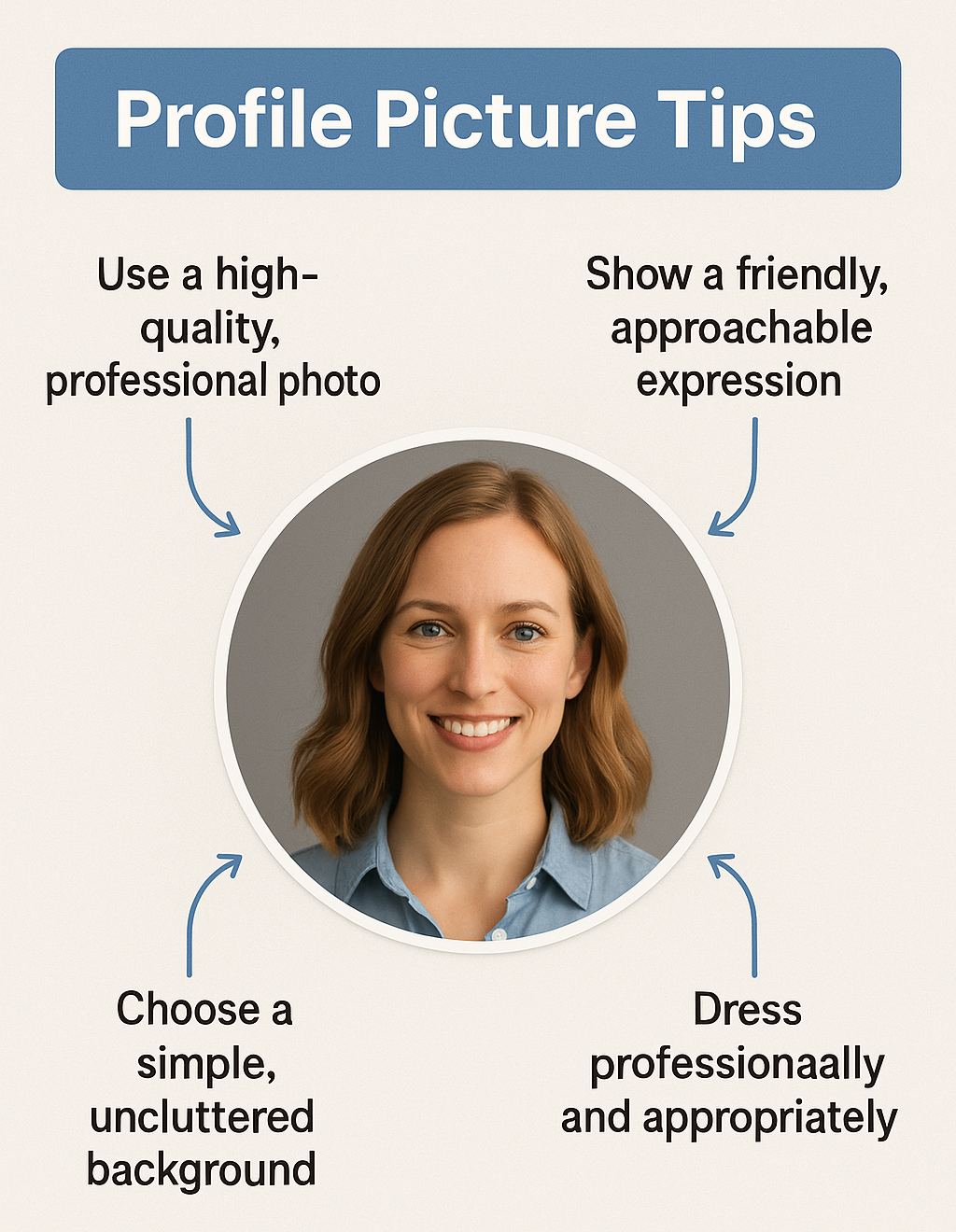
Your profile picture is often the first thing visitors notice on your LinkedIn profile. The research shows that professional headshots consistently outperform casual photos or logos in terms of engagement and credibility. In fact, profiles with professional headshots receive 14 times more profile views than those without.
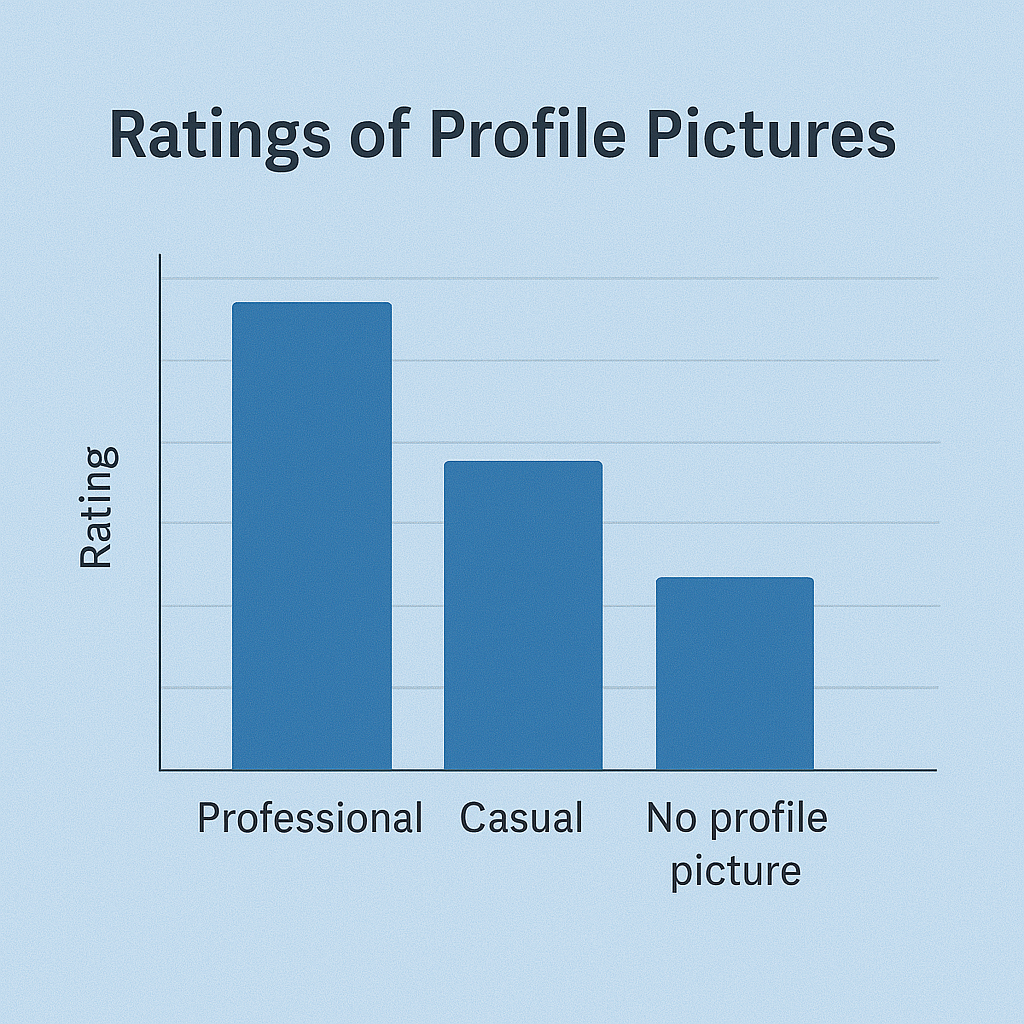
The data is clear: professional headshots receive significantly higher ratings than other types of profile pictures. This visual element is crucial for making a strong first impression and building trust with potential clients and opportunities. The study shows that profiles with professional headshots are 36% more likely to receive connection requests and 40% more likely to be contacted for speaking engagements or advisory roles.
Key Profile Elements That Matter Most #
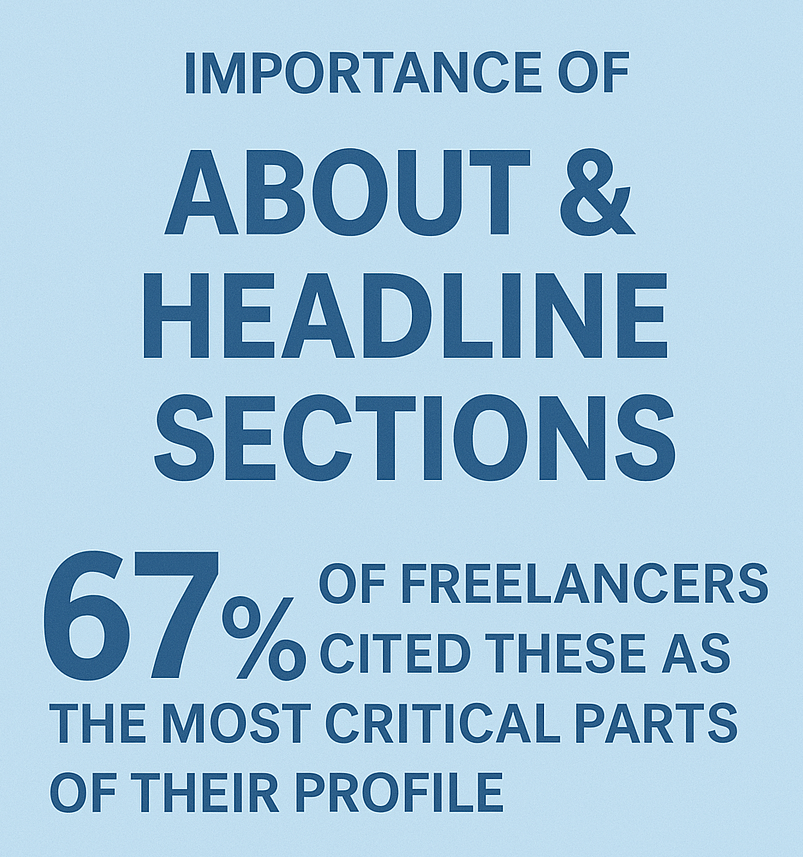
The research shows that 67% of successful personal brands consider their Headline and About sections the most important elements of their LinkedIn profile. These sections are your opportunity to make a compelling case for your expertise and value proposition. Profiles with well-crafted headlines and about sections receive 3.5 times more profile views than those with basic information.
Optimizing Your Headline for SEO #
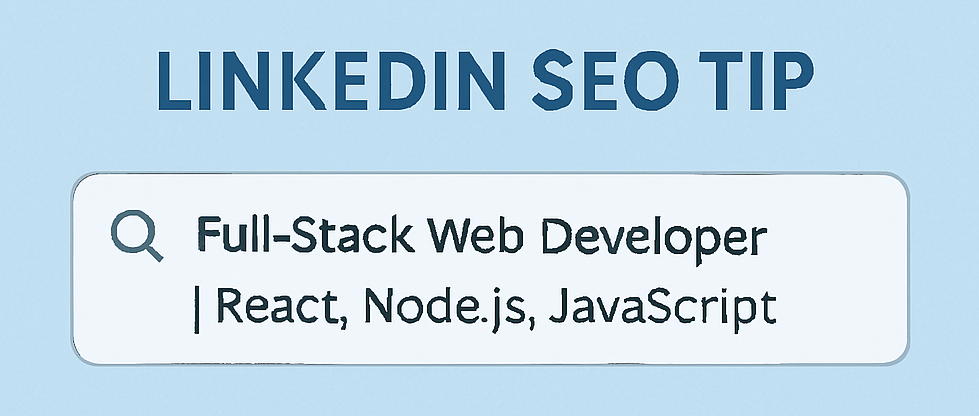
Your headline is crucial for both human readers and LinkedIn's search algorithm. By incorporating relevant keywords and clearly stating your expertise, you can improve your visibility to potential clients and opportunities searching for your services. The research indicates that profiles with keyword-optimized headlines appear in 40% more search results than those without.
Building a Compelling Professional Narrative #
Your LinkedIn profile should tell a cohesive story about your professional journey and expertise. Here's how to structure your narrative effectively:
- Headline: Create a clear, keyword-rich headline that immediately communicates your value proposition and thought leadership position
- About Section: Share your professional story, highlighting your unique approach and expertise
- Experience: Showcase your most relevant projects, speaking engagements, and achievements
- Skills: List and prioritize skills that align with your target audience's needs
- Recommendations: Gather testimonials that validate your expertise and work quality
The research shows that profiles with complete, well-structured narratives receive 50% more engagement and 60% more opportunities than those with basic information.
Real-World Success Stories #
The research uncovered several inspiring examples of freelancers who successfully leveraged LinkedIn to build their personal brands:
Sarah Chen, UX Designer #
Challenge: Breaking Through the UX Design Noise
Sarah faced the common challenge of standing out in the highly competitive UX design market, where thousands of designers showcase similar portfolio pieces. Rather than following the conventional approach of simply posting finished designs, she needed a way to differentiate herself from the sea of talented designers all competing for the same clients.
Solution & Results: Process Transparency Leads to 3X Growth
She developed a unique "UX Case Study" series that documented her entire design process. Each case study detailed her problem-solving methodology, from initial user research through iterations to final implementation, offering valuable insights to both potential clients and fellow designers. This transparent approach to sharing her work process resonated strongly with her audience. By demonstrating not just what she delivered but how she thought through complex design challenges, Sarah established herself as both an expert practitioner and an educator in her field. The results were remarkable: she saw a 200% increase in client inquiries and was able to command project rates three times higher than her previous average, with clients specifically citing her detailed case studies as a key factor in their decision to work with her.
Michael Rodriguez, Content Strategist #
Challenge: Starting Fresh in B2B SaaS
When Michael transitioned from general marketing to specialized B2B SaaS content strategy, he faced the challenge of building credibility in a new niche. He recognized that simply listing his past work wouldn't be enough to establish authority in this specialized field.
Solution & Results: Weekly Insights Drive 150% Growth
He committed to publishing weekly insights about content strategy in the SaaS industry, focusing on data-driven analysis and practical implementation tips. His consistent publishing schedule, combined with his focus on actionable insights, quickly gained traction. Michael's weekly posts became must-read content for SaaS marketers, leading to a 150% growth in his follower base. More importantly, his demonstrated expertise resulted in a 45% increase in client retention, as clients viewed him as a strategic partner rather than just a content producer. His success showcases how consistent, focused content creation can transform a freelancer's market position.
Emma Thompson, Digital Marketing Consultant #
Challenge: Competing Against Full-Service Agencies
Emma found herself competing against established marketing agencies, many with larger teams and broader service offerings. Rather than trying to match their comprehensive service packages, she needed to find a way to stand out in a market dominated by larger competitors.
Solution & Results: Niche Focus Drives 85% Client Growth
She carved out a distinctive niche by focusing exclusively on small business growth strategies. She developed a personal brand centered around making enterprise-level marketing strategies accessible and practical for small business owners. Through her LinkedIn presence, Emma shared detailed case studies of small businesses achieving significant growth through targeted digital marketing initiatives. She created content that specifically addressed the unique challenges and budget constraints of small business owners, establishing herself as their advocate and expert guide. This focused approach led to an 85% increase in her client base and a 60% increase in average project value, as clients recognized the value of her specialized expertise. Her success demonstrates how a well-defined niche focus can help freelancers compete effectively against larger competitors.
The Future of Professional Branding on LinkedIn #
As we move further into 2025, LinkedIn continues to evolve as a platform for professional branding. The integration of AI-powered features and enhanced marketplace capabilities means that professionals who maintain a strong personal brand on LinkedIn will have a significant advantage in attracting opportunities. The platform's recent introduction of LinkedIn Marketplace is expected to revolutionize how freelancers and professionals connect with opportunities, with early adopters reporting a 35% increase in speaking engagements and advisory roles.
Conclusion #
Your LinkedIn profile is your digital storefront in the professional marketplace. By implementing these strategies and maintaining a professional, consistent presence, you can transform your LinkedIn profile into a powerful tool for establishing thought leadership and attracting opportunities. The research consistently shows that professionals who invest in their LinkedIn presence see a 45% increase in speaking opportunities and a 30% increase in advisory roles.
Ready to elevate your LinkedIn presence? Join our waitlist to learn how Spark AI can help you maintain a compelling personal brand across all your digital channels.
Research cited from: Caruso, Alaina G., "Leveraging LinkedIn to Enhance Personal Branding: Understanding How Freelancers Pursue Digital Branding" (2021). Renée Crown University Honors Thesis Projects - All. 1626. https://surface.syr.edu/honors_capstone/1626
Related Tools
Take your thought leadership to the next level with these free Spark AI tools:
- Thought Leadership Mini-Plan - Build a custom plan from your LinkedIn profile with AI.
- Explore All Free Tools - Discover more ways to amplify your voice.
